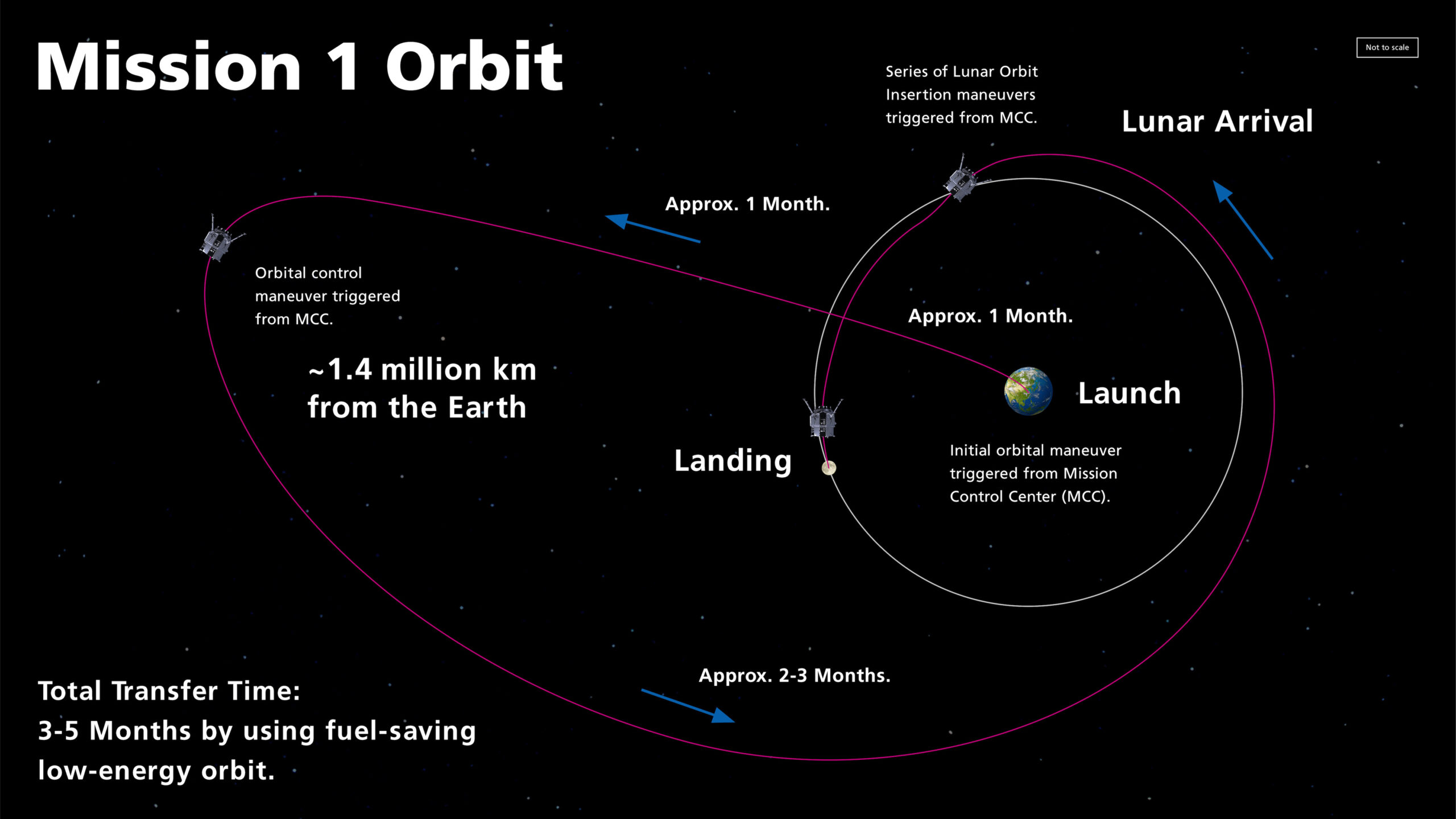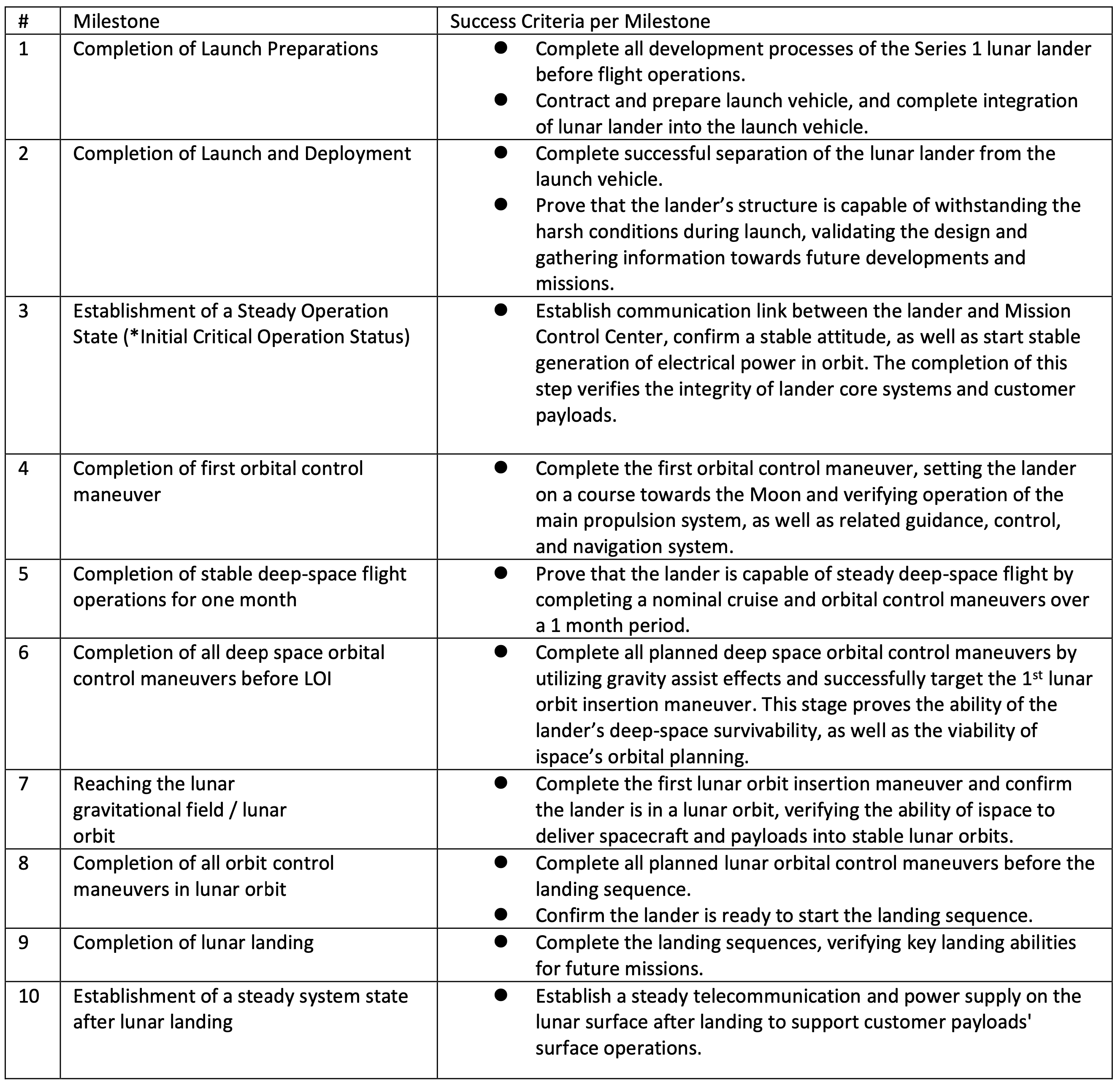15 Dec, 2022
TOKYO—December 15, 2022—ispace, a global lunar exploration company, is pleased to announce that it has successfully complete the first orbital control maneuver, setting the lander on a course towards the Moon and verifying operation of the main propulsion system, as well as the related guidance, control, and navigation system. By completing these activities, “Success 4” of the Mission 1 Milestones has been achieved.

The lander continues to maintain a stable attitude and power supply while completing the first orbit control maneuver at 12:00 on December 15 (Japan Standard Time). The lander is currently at a distance of approximately 550,000 km from the Earth and it will reach 1.4 million km around January 20 —the farthest point from Earth during Mission 1. After having reached the farthest point, the lander is planned to carry out an orbit control maneuver, setting it on its way towards a lunar orbit.
Further, ispace considers this to be a major milestone from a technological standpoint.
Capabilities that are essential to operate in lunar orbit and on the lunar surface were acquired, including on-orbit operation of the main propulsion system with large thrust, orbit control algorithms, flight planning technology to inject the lander into the scheduled orbit, and orbit evaluation technology after the orbit control maneuver was executed.
The company intends to accumulate a great deal of experience and knowledge through the achievement of this milestone, which can then be applied to future milestones.
The customer payloads on board Mission 1 are currently being checked out individually, with some already confirmed. Although Success 4 was completed prior to Success 3 in our Mission 1 Milestones, we plan to share the achievement of Success 3 after all customer payload check-outs have been completed. The order of achieved milestones occurred due to adjustments to the operations plan—no critical issues were identified at this time.
ispace will share further updates on HAKUTO-R Mission 1 as they become available.
Mission 1 Milestones
For Mission 1, ispace has set 10 milestones between launch and landing, and aims to achieve the success criteria established for each of these milestones. Recognizing the possibility of an anomaly during the mission, the results will be weighed and evaluated against the criteria and incorporated into future missions already in development between now and 2025. Mission 2 and Mission 3, which also will contribute to NASA’s Artemis Program, will further improve the maturity of ispace’s technology and business model. Future announcements on the progress of milestone achievement are expected to be released once attained.

About ispace, inc.
ispace, a global lunar resource development company with the vision, “Expand our Planet. Expand our Future.”, specializes in designing and building lunar landers and rovers. ispace aims to extend the sphere of human life into space and create a sustainable world by providing high-frequency, low-cost transportation services to the Moon. The company has offices in Japan, Luxembourg, and the United States with more than 200 employees worldwide. ispace technologies U.S., inc. is part of a team led by Draper, which was awarded a NASA Commercial Lunar Payload Services (CLPS) Program contract to land on the far side of the Moon by 2025 (as of November 2022). Both ispace, and ispace EUROPE S.A. (ispace EU) were awarded contracts to collect and transfer ownership of lunar regolith to NASA, and ispace EU was selected by ESA to be part of the Science Team for PROSPECT, a program which seeks to extract water on the Moon.
Established in 2010, ispace operated “HAKUTO” which was one of five finalist teams in the Google Lunar XPRIZE race. The company’s first mission as part of its HAKUTO-R lunar exploration program launched on December 11, 2022, from the United States on a SpaceX Falcon 9 rocket and is currently expected to land on the lunar surface around the end of April 2023. ispace has also launched a lunar data business concept to support new customers as a gateway to conduct business on the Moon.
For more information, visit: www.ispace-inc.com; Follow us on Twitter: @ispace_inc.
[i] As of Dec. 2022. Operational plan was recalculated based on the actual launch day and now assumes a maximum distance of approximately 1.4 million km from Earth.
[ii] As of Dec. 2022.